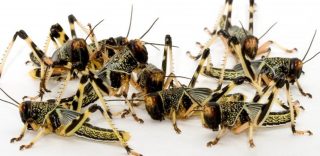Experts have said that a second wave of desert locusts, 20 times bigger than the first one, will hit farms in Kenya and the broader East African \region. The new swarms which are expected to hatch in May will be descendants of the first generation that the countries are battling to contain, with little or no success.
“The first generation of locusts is now breeding, they have laid their eggs; they will be hatching into nymphs and hoppers,” said Food and Agriculture Organisation representative to Kenya, Tobias Takavarasha, in an interview with Reuters.
Takavarasha noted that it was time to harness or control them before they start flying or before the swarm started affecting the coming planting season. Scientists estimate that the swarms in East African will be 400 times bigger by June if successive generations are not eliminated as over 20 counties have been infested by the insects in Kenya.
The FAO adds that rainfalls in the latter part of March could boost the breeding of insects. Already, hopper bands and an increasing number of new swarms are forming in Somalia, Ethiopia, and Kenya, with the Desert Locust Control Organisation for Eastern Africa warning that the situation in Nairobi could be worse because the swarms in Mogadishu could soon enter the country.
According to communication from FAO, first-generation immature swarms are also forming throughout Kenya’s northern and central counties and they are maturing, with some expected to be ready to lay eggs from the coming week till May.
The phenomenon which coincides with the onset of the long rains and hence the planting season, pose a big threat to the regions’ food security and livelihoods, even as the entire region suffers the effects of the coronavirus pandemic.
If adequate measures are not put in place, Kenya might experience food insecurity. “The country remains under threat as long as the locusts are not controlled in the Horn of Africa region, where new swarms are continually forming,” said DLCO-EA director Stephen Njoka.
FAO estimated that up to 20.2 million people living in Ethiopia, Kenya, and Somalia could be affected by food insecurity posed by the swarms. The agency has said fighting against the invasion without affecting farms in the East Africa countries, under its rapid response and anticipatory action would require about Sh16.2 billion.
By Ahmed Iyanda.








